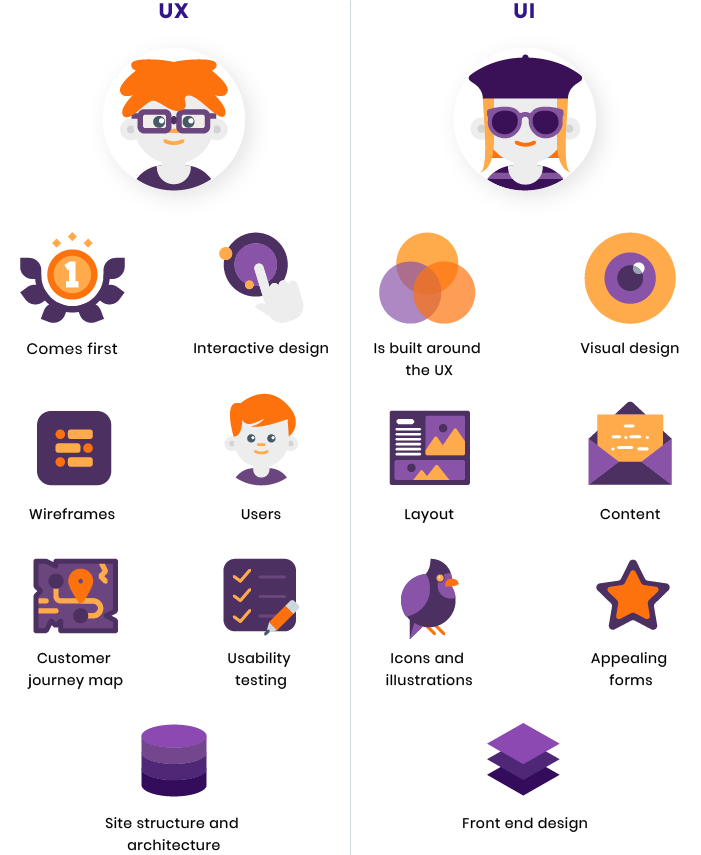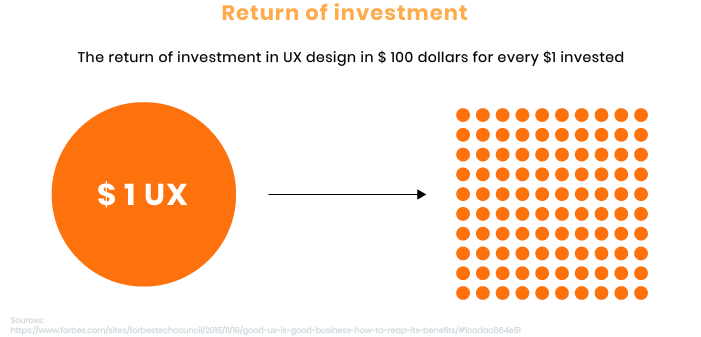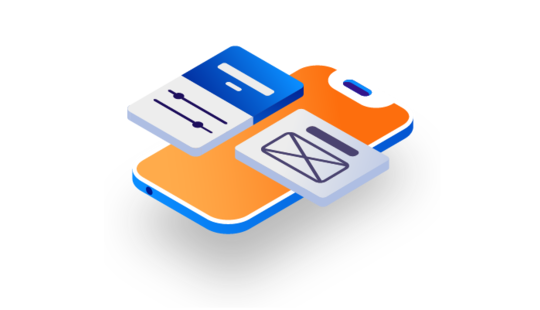-
Product Management
Software Testing
Technology Consulting
-
Multi-Vendor Marketplace
Online StoreCreate an online store with unique design and features at minimal cost using our MarketAge solutionCustom MarketplaceGet a unique, scalable, and cost-effective online marketplace with minimum time to marketTelemedicine SoftwareGet a cost-efficient, HIPAA-compliant telemedicine solution tailored to your facility's requirementsChat AppGet a customizable chat solution to connect users across multiple apps and platformsCustom Booking SystemImprove your business operations and expand to new markets with our appointment booking solutionVideo ConferencingAdjust our video conferencing solution for your business needsFor EnterpriseScale, automate, and improve business processes in your enterprise with our custom software solutionsFor StartupsTurn your startup ideas into viable, value-driven, and commercially successful software solutions -
-
- Case Studies
- Blog
Why the UX Is Important for Your Business
The user experience (UX) refers to the quality of experience and response a person has as a result of the interaction with your website, app, device, or service. All the aspects of such interaction with a product or company contribute to the UX. In other words, it’s the good-bad feeling one gets after using a product.
Why is the UX important for your business? The UX connects your users with your products, fulfilling your users’ needs and fulfilling your goals. The UX helps you create a product or service that is useful, comprehensive, and gratifying. Doing so will increase audience engagement, conversions, and revenue. Great UX design is important; it’s what makes market leaders. Just think about your experience with Google, Amazon, and Apple products. Apple wasn’t the first to invent the smartphone, just as Amazon wasn’t the first e-commerce retailer. What they did was change the way we interact with these products, making them easy to use. Such first-rate companies invest millions of dollars in the UX of their products, contributing to sales and revenue growth.
What’s the difference between the UX and UI?
The UX is very often confused with the UI or the user interface. Let’s go over the differences. Basically, the UI is a part of the UX. It encompasses the visual design (like colors and typography), branding, and layout. It defines how your product looks. The UX, on the other hand, is about how your product works. In brief, the UI is the visually appealing part, while the UX is the interactive part.

Benefits of great UX design for your business
Focus on the user and all else will follow.
If you want your product to be successful, it’s important to conduct UX research and invest in UX design. A good UX design is goal-based and user-oriented. Provided your product can help people meet their needs, they’ll see the value in it, be loyal to it, making it stand out among competitors.
So what advantages can a great UX design bring to your business?
1. Build the customer satisfaction–conversion–retention journey
As stated in a research study by Baymard on cart and checkout UX, 69,2 percent of customers abandon a cart after adding items. In 9 years of research, Baymard found that the design and checkout flow are the main reasons why users leave without purchasing.
An effective UX moves your users to their destination in the most efficient way. If you don’t provide your users with good navigation, a clean layout, a clear description of products, and appealing calls to action, you’ll get a user-hostile design. A bad UX pushes your customers into the welcoming arms of your competitors. If you provide your users with a smooth journey, they’re much more likely to end up buying your products.
There are 39 potential areas for checkout optimization. As soon as you eliminate sources of frustration, anger, and confusion, you’ll bring your users closer to a great deal. As a result of good service, you’ll get increased sales, a conversion boost, and repeat customers.
2. Reduce costs for development/bug fixing/marketing down the line
While creating a product, you go through multiple phases. One is the UX design phase. It includes not only the design process itself but research.
Why is UX research important? When done properly, it will show you how to reach your product’s full potential. Moreover, UX research (along with a risk assessment and target persona identification) will reveal what obstacles to avoid while making your product. It’s commonly known that it’s much cheaper to prevent a problem in the first place than to fix it after the release. Software engineer Roger Pressman writes in Software Engineering: A Practitioner’s Approach that if you want to fix an issue during the design process, it will cost you $1. After that, you’ll spend $10 during the development stage and finally $100 after release.
If you take UX research findings into consideration from the start and come up with an optimized UX design, you’ll minimize the money spent on referrals, sales, and marketing in the future. As long as your product resonates with users, they’ll be happy to recommend it to their family, friends, and colleagues.
A positive user experience creates long-lasting relationships with users who not only want to buy your service but promote it, for instance, recommending your product in social networks. Word of mouth referrals are free, saving you money on marketing.
Happy users are ultimately happy and returning customers.
3. Improve ROI
There’s more that comes with a good UX than just increased conversion rates. One of the biggest advantages you can enjoy is improved return on investment (ROI). Forrester wanted to evaluate and justify the value of the UX or a product. In a 2016 report titled “The Six Steps For Justifying Better UX,” they claim that every dollar spent on UX design returns $100.

Let’s take a look at real-life examples of some popular companies whose ROI increased after a UX design overhaul.
In order to find a way out of no ROI period, Walmart decided to totally redesign their website. After the makeover in 2018, Walmart’s ecommerce sales grew 43 percent. They worked not only on the UI but also invested a lot in the UX, changing the way shopping feels. The website got a new modern look with simplified navigation. They implemented a mobile look for the desktop version with a hamburger menu in the header. The biggest change was improved personalization, both individual and regional. Now users can see recommended items based on their purchase history and search as well as goods that are gaining popularity in their area.
Bank of America took a similar approach, improving their award-winning mobile banking app with a new personalized dashboard where users can have a quick peek of all their finances. Users also got a new offline experience. Bank of America enabled users to withdraw cash by logging into the app, choosing an amount to withdraw, going to the nearest ATM, and completing the journey on the ATM screen by entering their PIN. Having invested in a UX redesign, Bank of America saw a 45 percent increase in online banking registrations.
Let’s take a look at real-life examples of some popular companies whose ROI increased after a UX design overhaul.
In order to find a way out of no ROI period, Walmart decided to totally redesign their website. After the makeover in 2018, Walmart’s ecommerce sales grew 43 percent. They worked not only on the UI but also invested a lot in the UX, changing the way shopping feels. The website got a new modern look with simplified navigation. They implemented a mobile look for the desktop version with a hamburger menu in the header. The biggest change was improved personalization, both individual and regional. Now users can see recommended items based on their purchase history and search as well as goods that are gaining popularity in their area.
Bank of America took a similar approach, improving their award-winning mobile banking app with a new personalized dashboard where users can have a quick peek of all their finances. Users also got a new offline experience. Bank of America enabled users to withdraw cash by logging into the app, choosing an amount to withdraw, going to the nearest ATM, and completing the journey on the ATM screen by entering their PIN. Having invested in a UX redesign, Bank of America saw a 45 percent increase in online banking registrations.
4. Rocket SEO rankings
The quality of the user experience is tightly integrated with search engine optimization (SEO). Google strives to deliver the best search satisfaction, and the ranking of your website depends on their policies. Google has started analyzing dwell time (the amount of time users spend reading a page), the success of the user journey, web navigation behavior, and patterns. This means that the more user-friendly and well-designed your site is, the more relevant it will be for Google. If earlier SEO managers could stuff sites with keywords and links, now they have no chance to misguide the algorithm. Even if you’ve fully optimized your site, it may be shown on the second or third page of search results if it has an unsatisfying UX. Retaining visitors with a great UX is a workable strategy.
5. Stand out from the crowd
Sometimes your startup doesn’t need to be innovative. You can simply take a usual idea and convey it differently. There are thousands of apps and services that are similar, but only a few are conspicuous enough to become popular. Just address some basic needs and provide a satisfying UX to appeal to users and be well-liked.
Take a look at Airbnb and its inspiring success story. When Airbnb came to the market there already were strong competitors, but Airbnb had a valuable advantage. What they did was analyze competitors’ mistakes, people’s pain points, and similar services to make customers feel at home.
Airbnb created an atmosphere of trust and loyalty by adding:
- verified photos to ensure that places really exist and are in the proper condition
- multi-level identity verification to avoid identity fraud and run background checks
- links to Facebook accounts to get acquainted with guests/hosts
- Superhost badges to help users find honest and top-rated hosts
- secure payments so users can pay only after check-in
- reviews to read about the experiences of other guests
Such a delightful experience was key to their roaring success. Even CEO Joe Gebbia admits that UX optimization was pivotal in becoming a $35 billion giant.
Wrapping up
The lesson all these examples teach us is that you should never underestimate the benefits of UX for your business. Investing in UX design is a financial win, as the long-term merits include not only better ROI but lower expenses, better customer retention, and higher Google rankings. As long as you keep your UX optimized, you’ll be able to outrun your competitors and enjoy customer loyalty.












